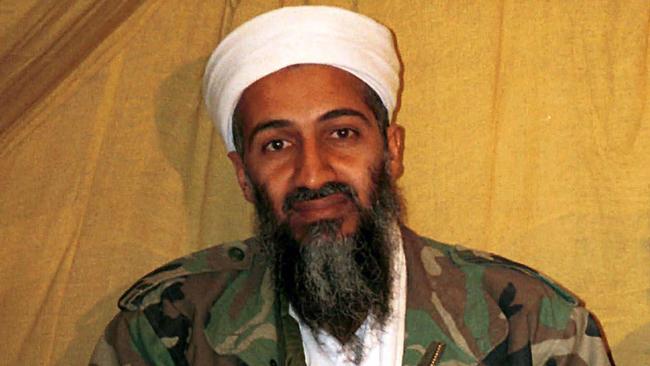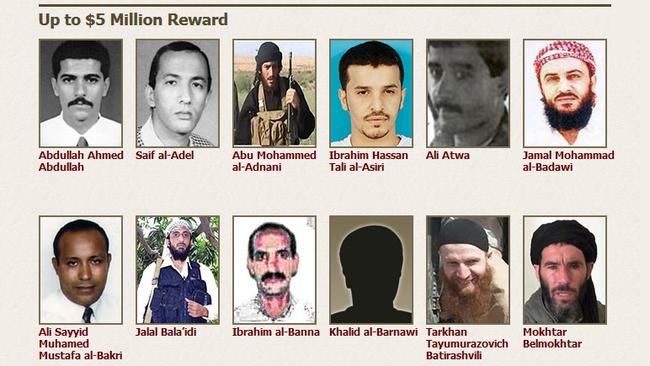The Rewards for Justice program offers bounties to try and stop terrorism
WITH bounties on their heads from $5m to $25m, there’s serious cash in catching wanted terrorists. How that money’s calculated might surprise you.

THE leader of al-Qaeda, Ayman al-Zawahiri, holds the dubious honour of being the world’s most wanted terrorist.
As such, the State Department Bureau of Diplomatic Security’s Rewards for Justice program is offering $25 million for information leading to his whereabouts.
Taliban chief Mullah Omar, Islamic State leader Abu Bakr al-Baghdadi and Haqqani Network head Sirajuddin Haqqani are all deemed worthy targets too, with a $10 million bounty offered for bringing them to justice. The next tier down offers $5 million for information regarding a list of 46 well-known terrorists
But just how are these bounties calculated?
According the website, reward sums are determined by the perceived threat the individual poses for committing international acts of terrorism.
“Under this program, the Secretary of State may authorise rewards for information that leads to the arrest or conviction of anyone who plans, commits or attempts international terrorist acts,” the website reads.
“The Secretary is authorised to pay a reward greater than $25 million if he/she determines that a greater amount is necessary to combat terrorism.”
The program claims it has been vital in the arrest of a number of high profile international terrorists and has paid over $125 million to more than 80 people since its inception in 1984.

Economics professor at George Mason University, Alex Tabarrok, has done extensive research into bounties and believes they have long been a vital part of the justice system.
However, he feels the need differentiate between the bounties offered for international terrorists and those in place for criminal defendants.
Mr Tabarrok said terrorist bounties are aimed more at the acquestion of information, where as bounties for criminal defendants are often paid for the physical capture of crooks on the run.
As for the sum of money on offer, Mr Tabarrok said a higher reward would greatly reduce the costs of pursuing strategies other than offering bounties.
“We could’ve put a bounty on bin Laden’s head in 2001 of, let’s say, $500 million,” he told the Atlantic.
“Instead we chose, no, we’re going to spend something like a trillion dollars invading Afghanistan and then we’re going to be there for now over 10 years, and this is going to cost so many US lives.”

However, a former State Department official who oversaw the Rewards for Justice program suggests this is not the case
Walter Deering said bounties offering exuberant amounts of money are often more costly because they are responsible for an overwhelming number of false leads, which must be followed.
“We’d get a lot of tips that were totally off the wall,” he told the Washington Post.
“You’re looking for the proverbial diamond in a haystack.”
Former CIA counterterrorism official Robert Grenier agreed that higher bounties were not the answer, although his reasons had a different justification.
“Some of the speculation in the past has been that these are folks who can understand having a new Toyota Land Cruiser or 50 head of sheep, but $25 million is just like an abstraction, it doesn’t resonate with them,” he told theAtlantic.
He added that he could not recall a time when a terrorist was brought to justice as a direct result of a lead from the Rewards for Justice program.
“I’m sure it’s happened but ... in my experience it just has not been a serious factor.”
“I certainly don’t know of any senior member of al-Qaeda who was ever brought in as a result of somebody who gave him up in hopes of getting monetary reward.



